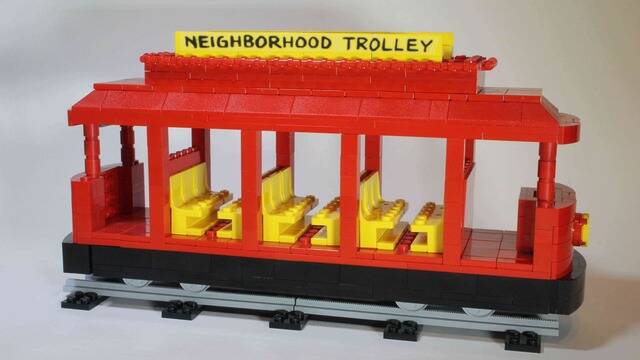Smart growth got censured in Cincinnati last week, as voters elected a mayor who promises to kill that city’s planned streetcar system, which was supposed to open with a 3.6-mile loop in 2016. (There’s a map on the city website, for however long the new mayor keeps it there, and a WCPO story on streetcar supporters trying to keep the dream alive.) Robert Steuteville, editor of the website “Better! Cities & Towns,” points to a electoral problem for the smart growth movement, which encourages development around public transit:
[…] New Urbanism, smart growth, and related trends need to work on their appeal to working class and minority groups.
That may be one reason why Roxanne Qualls, mayor of Cincinnati in the 1990s, came far short on her bid to be elected again. Qualls built her campaign around support of the city’s streetcar. Qualls argued the streetcar is a key to economic growth in Cincinnati and that it will attract young, talented workers and connect the high-employment districts in the city. The $133 million streetcar has already begun construction with the aid of $44.9 million in federal grants. Mayor-elect John Cranley, Qualls’s opponent, promised to cancel the project.
Qualls is right. The streetcar would be good for Cincinnati. Canceling it will cost the city a pile of money and slow redevelopment of up-and-coming neighborhoods. Yet this position did not interest most voters. Minority voters mostly stayed home, even though city’s African-American Chamber of Commerce endorsed Qualls. The working class neighborhoods went for Cranley. Qualls won downtown and adjacent neighborhoods, but that only added up to 42 percent of the vote.
Public transit often gets caught in a vise formed by opposite socioeconomic groups. Many historic and affluent neighborhoods are cool to the idea, if only because they’re wary of any new development. (The fear of “outsiders” coming into the area is usually left unspoken by community leaders.) The Georgetown neighborhood is one of the last neighborhoods in Washington, D.C., without a subway stop (though engineering challenges may have been a bigger factor than local opposition), and Boston’s MBTA was blocked from extending a subway line into the quiet suburb of Arlington. Currently, the proposed move of the Atlanta Braves to the suburbs is raising alarms how people will travel to the new baseball stadium. The Atlanta Constitution’s Jay Bookman relays the unusually blunt demand of Cobb County’s Republican chairman:
“It is absolutely necessary the [transportation] solution is all about moving cars in and around Cobb and surrounding counties from our north and east where most Braves fans travel from, and not moving people into Cobb by rail from Atlanta.”
But poorer neighborhoods can also be wary of public transit, as the Cincinnati election results suggest. A neighborhood with improved public transit may attract more economic activity, but it’s also likely to experience higher rents and home prices. A quicker way to get downtown may not be worth the threat of gentrification.
It’s also understandable if neighborhoods with broken streetlights and high crime rates see a downtown streetcar system as a luxury item. In reporting on the Cincinnati race, the Atlantic Cities’ Eric Jaffe notes that winning candidate Cranley captured this attitude in his response to a TV reporter: “We will stop this project. We will bring some sanity back to the financial house of the city and we will put the focus back on neighborhoods and basic services and public safety.”
Poorer neighborhoods can also be suspicious of smart growth policies, and the new transit infrastructure they require, if they feel shut out of decision-making. Next City’s Anna Clark reports on one tool that may lessen suspicions toward big-city government. In Chicago, an experiment called “participatory budgeting” invites residents to vote on how to spend money allocated to their neighborhood:
At stake is $1.3 million in “menu money” that council members receive from the City of Chicago for capital projects in their wards. In the participatory budgeting process, a council member—[Alderman Joe] Moore in this instance—agrees to turn over $1 million of that to pay for projects proposed and voted on as priorities by residents. (The rest is saved for emergencies and cost overruns.) The last year Moore spent menu money at his own discretion was 2009. Since then, residents have voted to use the funds to support a range of projects that have taken shape in the neighborhood, including the Dubkin Park community garden, heating shelters at three transit stations, bike lanes and a $110,000 dog park.
What might Ward 49 vote for this year? When the neighborhood assemblies broke up into small groups facilitated by volunteer representatives—some who appeared nervous in the role, albeit heartfelt—dozens of wide-ranging ideas were brainstormed and scrawled on paper taped to the walls. Among them were green alleys, a community composting site, speed bumps at key intersections, signs reminding people to leash their dogs, and a small retaining wall on lakefront paths.
There’s much to recommend in this attempt at government transparency. As a native of New England, which fetishizes town meetings and “direct democracy,” I’d be wary of putting too much of a city’s budget into participatory budgeting. (Trust me, Chicagoans, you don’t want meetings that last all night and are dominated by “I’ve lived here my entire life” NIMBYists.) The Chicago model is also unsuited to large projects, such as a streetcar system, that cut across neighborhoods and take years to build. It can, however, give residents a chance to take action on particular concerns—maybe one neighborhood wants to spend money on nicer shelters at streetcar stops, while another prefers to build safety fences to prevent children from crossing the tracks. Regional planning is a key component of smart growth, but giving some autonomy to towns and neighborhoods may be the best way to ease a path for more transit-oriented development.
Lego version of the trolley from Mr. Rogers' Neighborhood from a website proposing new pre-packaged Lego sets.








